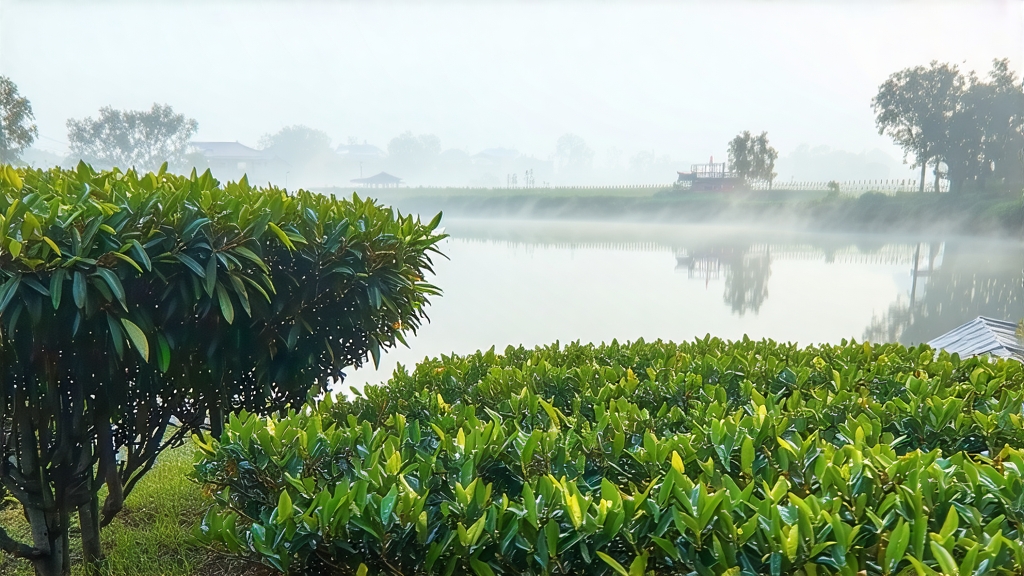
Biluochun, whose name translates literally to “Green Snail Spring,” is one of China’s ten most celebrated teas, yet it remains modestly sized—each finished leaf is smaller than a fingernail and curls into a tight spiral reminiscent of a snail shell. Grown almost exclusively in the mist-laden foothills that ring East Taihu Lake in Jiangsu Province, this green tea has captivated emperors, poets, and modern connoisseurs for over a thousand years with its unmistakable orchid-and-velvet aroma and a sweetness that lingers like a distant bell. To understand Biluochun is to step into a microclimate where lake, fruit trees, and tea bushes converse daily in vapor and scent; it is also to witness a craft that balances killing the green within seconds while preserving the downy hairs that give the liquor its shimmering opacity. The following exploration moves from mountain to teacup, guiding international readers through history, terroir, cultivar nuances, handcraft, brewing science, and sensory evaluation, so that the next time you uncork a tin of these jade spirals you can coax their full, delicate story.
-
Historical vignettes: from scarecrows to tribute tea
Local chronicles credit a tea picker named Biluochun who lived during the late Tang dynasty for discovering the cultivar, but the first verifiable record appears in the “Chronicles of Dongting Mountain” (976 CE), noting that monks on Dongting East Mountain traded tiny curled tea for rice. By the Ming dynasty the tea had become so coveted that Chongzhen Emperor (r. 1627-1644) decreed it “xia sha ren xiang”—literally “scary fragrance”—because its perfume was thought excessive for commoners. The Kangxi Emperor, touring the south in 1699, renamed it Biluochun to soften the name and celebrate its snail-shell shape, simultaneously elevating it to gong cha (tribute tea) status. Annual harvests were rushed by courier station horses to Beijing within ten days, wrapped in damask soaked in lake water to maintain moisture. European missionaries first mentioned the tea in 1740 as “Pi Lo Chun, a green of extraordinary delicacy,” and by 1915 it won gold at the Panama-Pacific International Exposition, sealing its global reputation. -
Terroir: where lake mist meets fruit blossoms
Dongting East and West Mountains are actually limestone islands rising from Taihu, China’s third-largest freshwater lake. Warm daytime lake air collides with cool nighttime mountain downdrafts, forming a 200-meter belt of perpetual fog that filters sunlight into a soft, diffused glow. Humidity hovers around 80 %, slowing photosynthesis and prompting the plant to accumulate theanine and aromatic esters. Another unique feature is intercropping: peach, plum, apricot, and loquat trees are planted every 5–6 meters among tea bushes. When spring fruit trees blossom they shower petals and pollen onto the tea, and bees shuttle volatile compounds between species. Researchers at Nanjing Agricultural University identified benzaldehyde and linalool—key peach and orchid notes—in Biluochun that are absent in neighboring plantations lacking fruit canopies. Soils are acid sandy loam rich in magnesium and boron, contributing to the tea’s signature “sweet finish” that arrives 30 seconds after swallowing. -
Cultivars: the bush that thinks it’s a bonsai
The original landrace is the Dongting小叶群体种 (micro-leaf population), a shrub that rarely exceeds 70 cm, allowing pickers to reach every bud without ladders. Leaves are elliptical, only 3 cm long, with 28 % more trichomes per square millimeter than Longjing Qunti. Since 1982 agronomists selected three clonal varieties—Dongting Early #5, Biluochun #12, and Wuxi #53—each bred for either frost resistance or heightened amino acid content. Purists insist only the micro-leaf population delivers the classic “three whites” look: white bud tip, white down on the leaf reverse, and white froth on the cup surface. Regardless of cultivar, bushes are pruned into a flattened “arc” shape that maximizes mist contact and discourages woody stems. -
Plucking calendar: one leaf, one heart, before the rain
Harvest begins when lake surface temperature hits 12 °C, usually between Vernal Equinox and Qingming